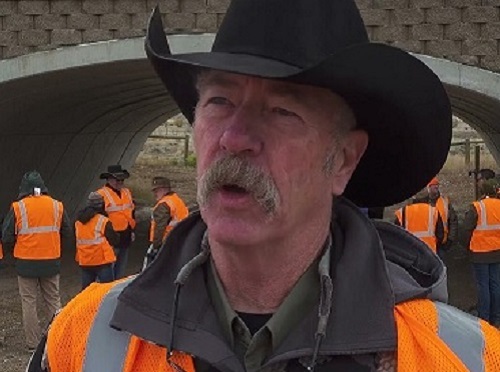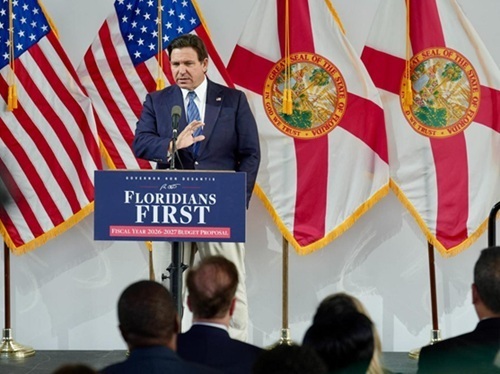The Utah Department of Transportation is currently installing nearly three miles of wildlife fencing along the outside perimeter of Echo Junction where I-84 and I-80 meet, north of the Echo Reservoir in Summit County.
[Above photo by Utah DOT]
The agency said this new stretch of fencing – which should be fully installed by November – will help funnel wildlife to a nearby freeway under crossing.
“This is a major hotspot for wildlife,” said Matt Howard, Utah DOT’s natural resources manager, in a statement. “We’re focused on reducing the number of wildlife-vehicle collisions, and this new fencing will save the lives both of humans on the road and wildlife nearby.”
[Editor’s note: The video below from the New Mexico Department of Transportation explains the role wildlife crossings play in the protection both animals and the traveling public.]
The agency – which manages over 60 wildlife crossing statewide – said the total cost for this phase of this fencing project is $2.3 million, with this stretch of fencing partially funded by nearly $350,000 in grants from the National Fish and Wildlife Foundation and other stakeholders, including support from the Utah Division of Wildlife Resources or DWR and several local conservation organizations.
“We are so grateful to partners like Utah DOT who are helping improve wildlife connectivity and make safer migrations,” noted Makeda Hanson, DWR’s Utah wildlife migration initiative coordinator. “Roads can be a major barrier to wildlife movement. However some individual animals or herds will attempt to cross roads even when high traffic occurs in a particular area.”

[Editor’s note: A research document released in July 2022 by an international pool funded study led by the Nevada Department of Transportation provides an “authoritative review” of the most effective measures to reduce animal-vehicle collisions, improve motorist safety, and build safer wildlife crossings.]
Hanson emphasized that wildlife fencing plays an important role in keeping wildlife safe by directing them to safer crossing locations, like large culverts and underpasses. “We use many tools to ensure wildlife can still make important migrations between different habitat areas,” Hanson said.
Other state departments of transportation are also engaged in efforts to prevent wildlife-vehicle collisions.
For example, in November 2023, the Wyoming Department of Transportation completed wildlife crossings built as part of its $15.1 million Dry Piney project.

The Dry Piney project – a joint effort between the Wyoming Game and Fish Department and the Wyoming DOT – includes nine underpasses and 16.7 miles of eight foot-high fencing on both sides of Highway 189 in the western part of the state to protect big game animals, primarily mule deer.
More broadly, in December 2023, the Federal Highway Administration issued $110 million in grants to 19 wildlife crossing projects in 17 states, including four projects overseen by Native American tribes.
FHWA noted that the time that its data indicates there are more than one million wildlife vehicle collisions in the United States annually, with wildlife-vehicle collisions involving large animals resulting in approximately 200 human fatalities and 26,000 injuries to drivers and their passengers each year.
Those collisions also cost the public more than $10 billion annually, according to FHWA; a figure that includes the total economic costs resulting from wildlife crashes, such as loss of income, medical costs, property damage, and more.
 States
States
NCDOT Staff Participate in ‘Explosive’ Technical Training
December 19, 2025 States
States

